Clothing Set: Cap & Parka Item Number: E2055-0 from the National Museum of Natural History
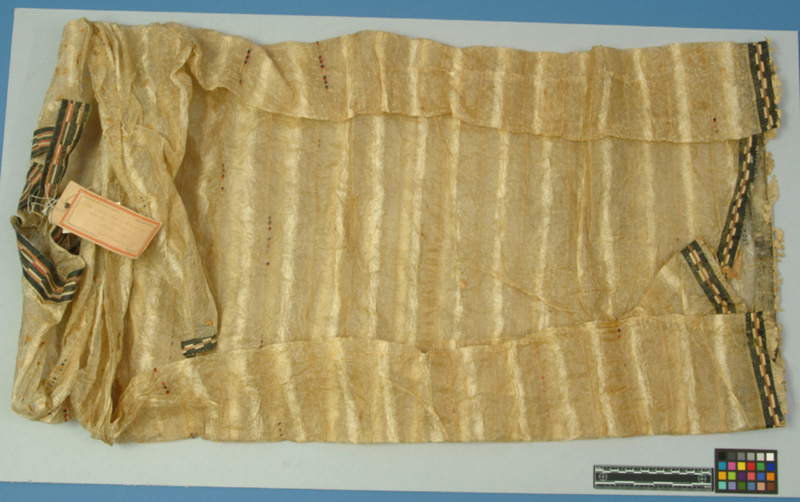
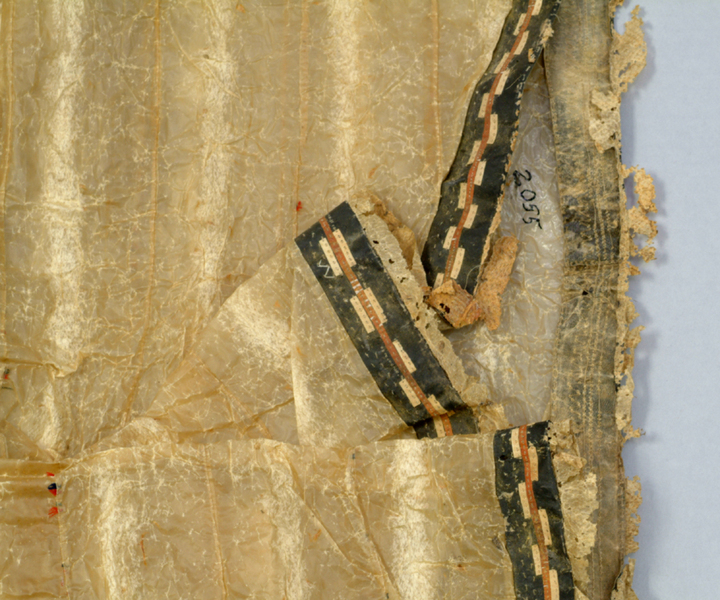
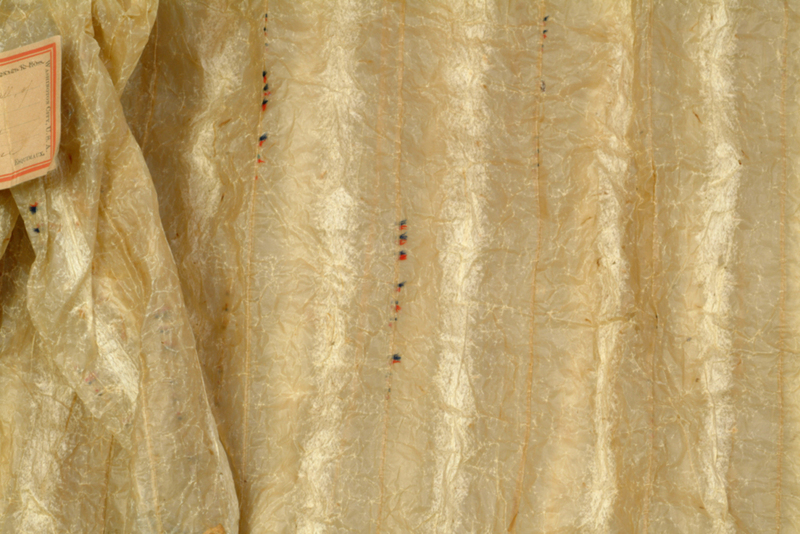
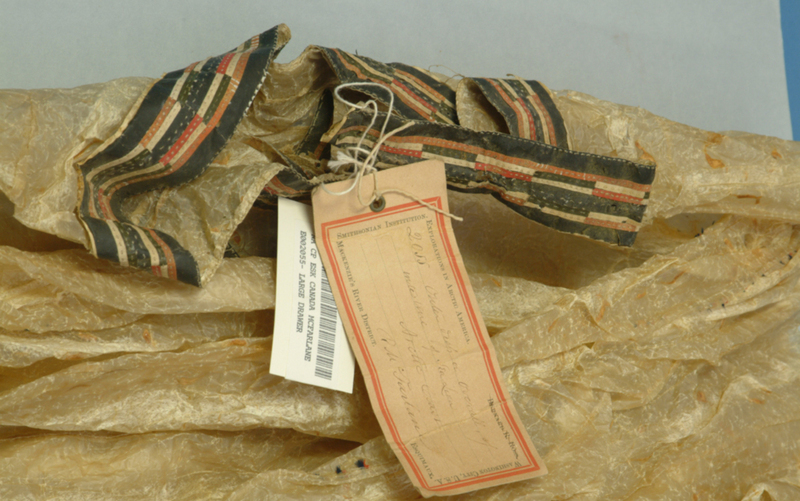
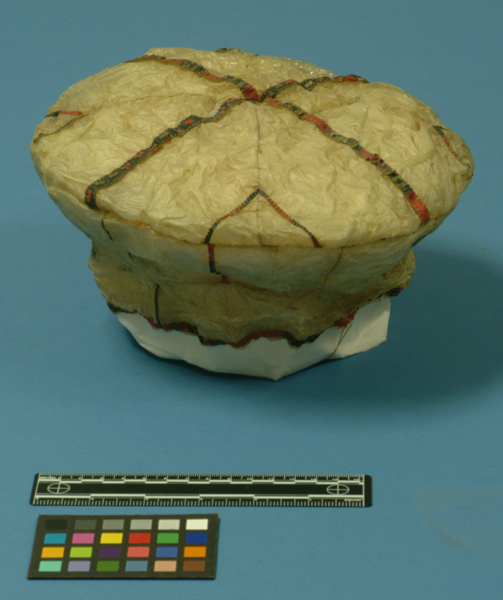
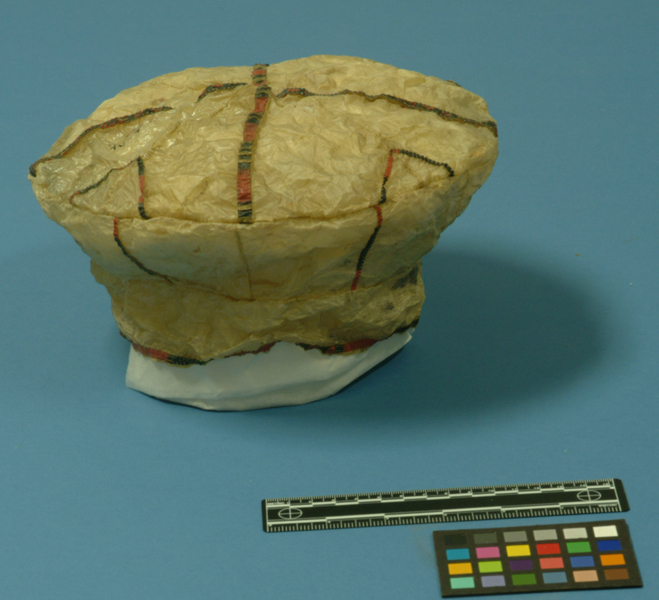
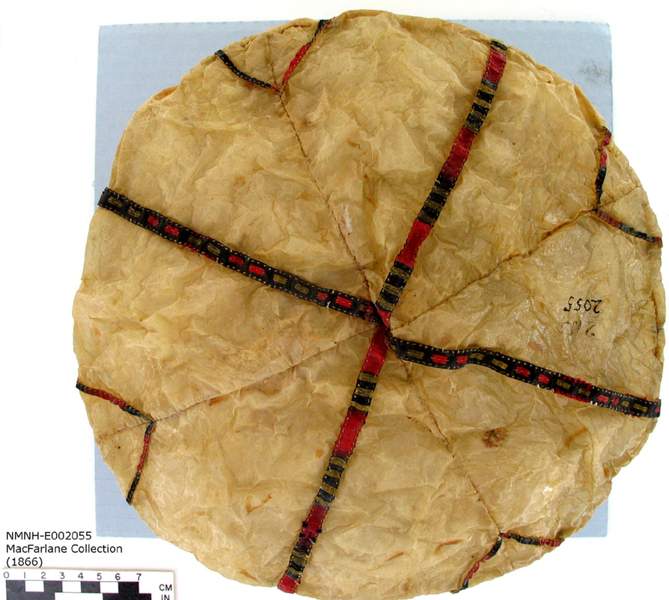
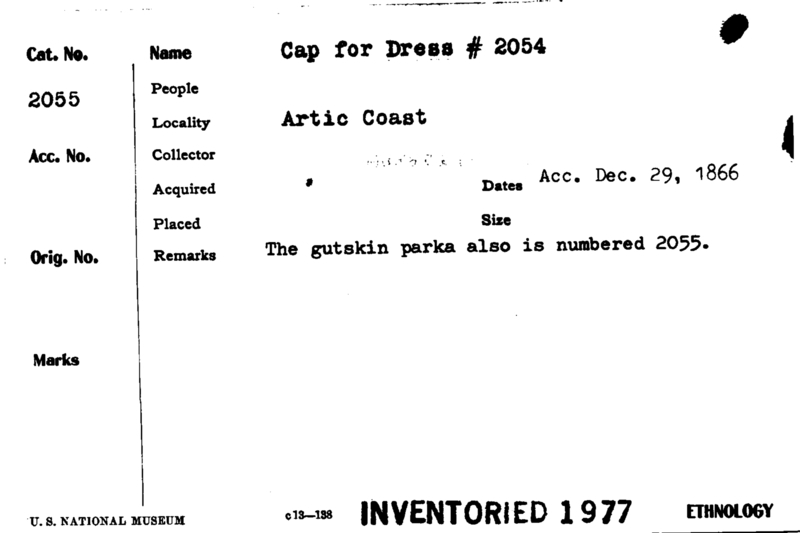
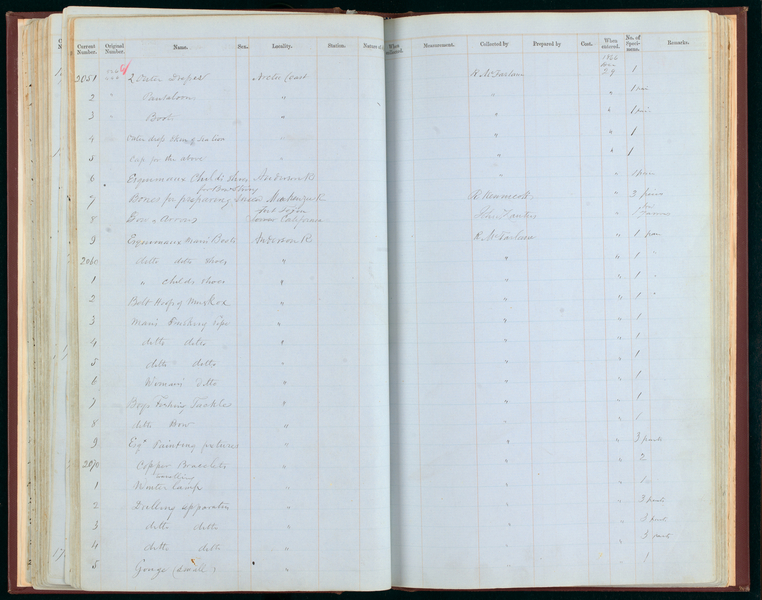
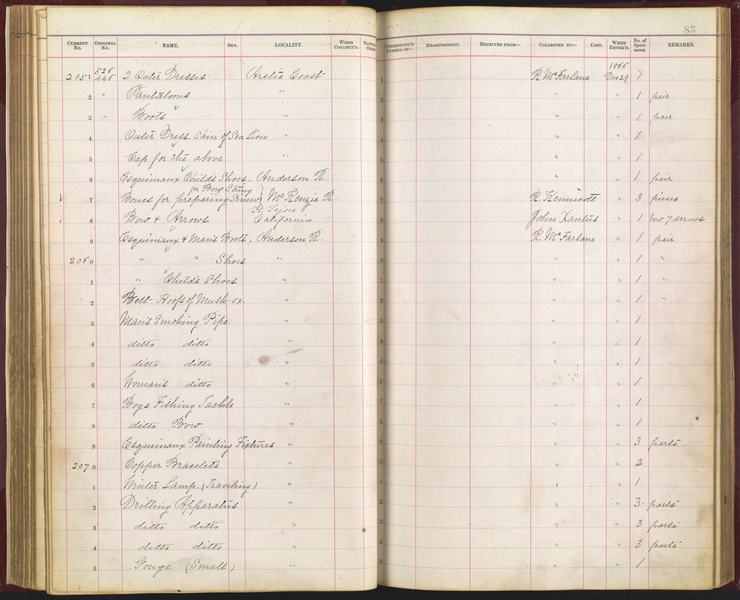
Notes
FROM CARD: "THE GUTSKIN PARKA ALSO IS NUMBERED 2055."Gutskin coat/parka may have originally been numbered E2054; records indicate it forms a set with the gutskin hat/cap. E2054 is identified as made from sea lion.Source of the information below: Inuvialuit Pitqusiit Inuuniarutait: Inuvialuit Living History, The MacFarlane Collection website, by the Inuvialuit Cultural Resource Centre (ICRC), Inuvik, N.W.T., Canada (website credits here http://www.inuvialuitlivinghistory.ca/posts/12 ), entry on this artifact http://www.inuvialuitlivinghistory.ca/items/175 , retrieved 12-27-2019: Waterproof coat and cap. The coat is made of sea mammal intestine that was cut and sewn in horizontal strips. In several places, pieces of red and black wool have been sewn into the seams for decoration. The decorative pattern around the neck, cuffs, and hem is made of pieces of dyed sea mammal esophagus. The coat lacks ties around the hem that are distinctive of waterproof coats used when hunting in kayaks. The cap is also made of sea mammal intestine with decorative strips. The hat may have been based on a Russian style. More information here: http://www.inuvialuitlivinghistory.ca/item_types/28: Waterproof clothing made from intestines was worn when travelling and hunting in boats, and for protection from rain. Coats made of this material used by kayakers typically had ties along the hem so that they could be secured around the cockpit to prevent water from entering. Oral histories also tell of people wearing gut skin clothing while standing in water butchering large whales that had been hunted and brought to shore. Highly decorated garments made from intestines were also worn for ceremonial purposes. Sea mammal intestines undergo complex processing before they are sewn into garments, including several washings, peeling inside and out, and scraping with a blunt scraper.Information per Claire-Estelle Daitch, 2007: Waterproof gut skin parka acquired by Roderick MacFarlane from "the Arctic Coast" in 1866. The elaborate trim is characteristic of gut skin parkas made in the eastern Aleutian Islands. The companion piece to the parka is [a] sea-lion gut cap decorated with colored threads and yarns. One of the many unique objects in the MacFarlane collection is a fabulous Aleut-Alutiiq gut skin parka and cap in extraordinary condition. The parka is decorated with colorful strips of dyed skin-red, black, white and green that create an intricate geometrical design around the neckline, arms, and waistline. Additionally, there are small pieces of red and black trade cloth stitched between the seams. … Of special interest is the cap that accompanies the parka. Made from the same waterproof intestine as the shirt, the cap is shaped like a sailor's cap, revealing the influence of European-Russian clothing styles popular in the Eastern Aleutians and on Kodiak Island in the middle of the 19th century. The gut skin garments in the MacFarlane collection were probably acquired directly from Yankee whalers who regularly stopped in the Aleutians for clothes and supplies on their voyage to the Bering Sea whaling grounds.
Item History
- Made in Arctic Coast, Canada
- Collected in Arctic Coast, Canada
- Received from Roderick R. MacFarlane on December 21, 1866
Who
- Culture
- Aleut ?
- Received from
- Roderick R. MacFarlane
Where
- Holding Institution
- National Museum of Natural History
- Made in
- Arctic Coast, Canada
- Collected in
- Arctic Coast, Canada
When
- Acquisition Date
- on December 21, 1866
Other
- Accession Number
- 66A00090